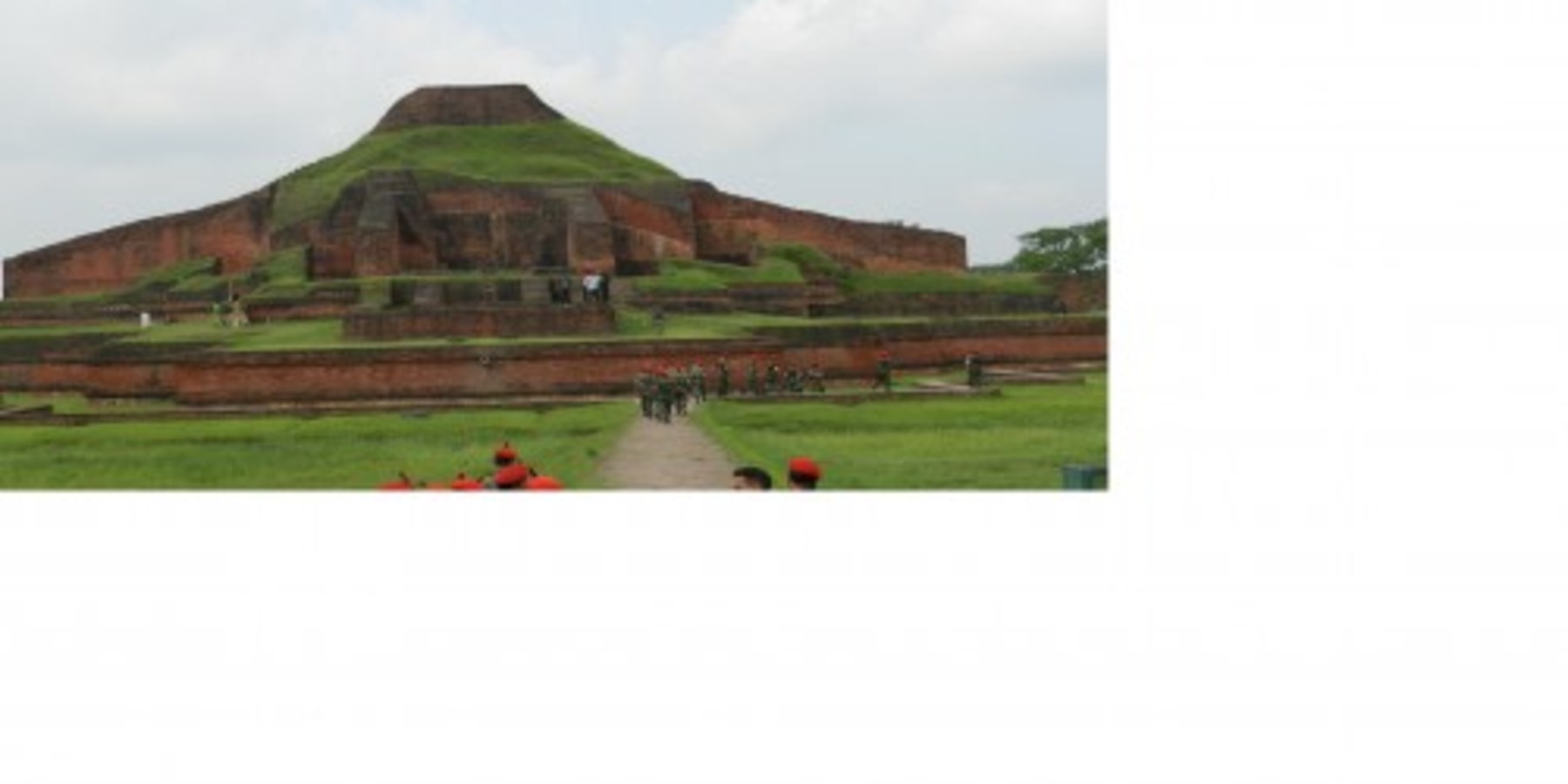
In the early century Gautam Buddha was revered as a saint and not as a God. Buddha had taught that the continuous circle of births and rebirths could be overcome only by ‘the wheel of the law’ after which it would find eternal rest in Nirvana’.
In the first century AD a new school of Buddhism was founded which called itself the greater vehicle (Mahayana). According to the Mahayana Buddha was the incarnation of God. They called the older orthodox form of Buddhism; the lesser vehicle (Hinayana)’. The followers of ‘Mahayana’ could produce serene Buddha statues with the image God very wonderfully during the Gupta period (300-500 AD). In the later century there some mixture of two religions when some Hindu began worshipping Buddha as an incarnation of ‘Vishnu’. This mixture existed during the Pala dynasty which reflected on the lower set of terracotta tiles at Paharpur when the Hindu ‘Shiva’ and ‘Ganesh’ where also implanted.
The most important literary works about Buddhist in India and Bangladesh could be traced from the travel report of great Chinese pilgrims. The most prominent ones were Fa-Hien who traveled overland between 399-414 AD, Huen Tsang traveled between 629-645 AD and I-Tsing travel between 671-692 AD.
Buddhism gained widespread acceptance all over India during the reign of emperor Asoka (273 -232 BC). During this period the Buddhism was also widely established in Bangladesh, particularly in the north Bengal. King Asoka also erected one great stipa in Mahastangarh in the 3rd century BC.
In the 7th to 12th centenary A.D. Bangladesh passed the glorious period under the Royal Patronage of Buddhist Kings of Kharga, Chandra, Deva and Pala dynasty. During the Pala dynasty most of the Buddhist monasteries, stupas and religious centers were established of which Vasu Vihara at Mahastangarh, Sampura Vihara (Paharpur) of Rajshahi, Salban Vihara of Comilla, Pandit Vihara of Chittagong, Vikramshila Vihara of Dhaka developed like universities, Monks and students from all over the world specially from Myanmar and china came to these places for study, philosophy, ethics, metaphysics, astronomy and other fields of knowledge.
Buddhist schools like Atish Dipankar Silbhadra, Santarakshit, Kamalsila, Jetari, Banasree, Naropa, Tilopa carried the light of Buddhism to the far distance of the ancient India. The mystic songs (Charyyapada) composed by the Buddhist monks mark the beginning of ancient Bengali literature, which is the foundation of great Bengali language.
Subsequent to the 12th centaury, the Hindu imperial of Sen dynasty ousted the Buddhist Palas from power and established their rule over Bengal. The Hindu kings were very much intolerant of Buddhism and as a result the sculptures and terracotta plaques of Hindu gods & goddesses replaced the Buddhist sculptures and terracotta plaques of Paharpur Monastery, Moinamati Vihara and many other Buddhist centers.
There are 1.2 million Buddhist who are the permanent citizen of Bangladesh are maintaining their tradition of Theravada Buddhism.

